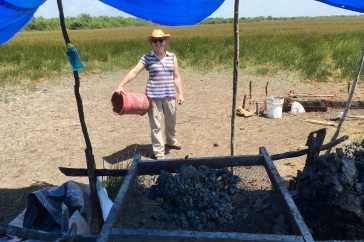
Kimberly Mitchell, left, and Lisa Jones, both research associate professors of psychology in UNH's Crimes against Children Research Center. Photos by Perry Smith.
Researchers at UNH have received a $2.95 million grant from the National Institutes of Health for work that aims to reduce self-directed violence (SDV), such as attempted suicide, by teens and young adults. The researchers will study the effect of adolescent bystanders who are exposed to other teens and young adults engaging in SDV and how intervention or contact can influence both the teen and the bystander. The grant will help researchers learn more about how bystanders handle SDV-related situations, how often they happen and if attempts to intercede have been successful in providing positive change.
“Self-directed violence, or intentional injury to one’s own self including attempted harm or even death, is a significant public health issue.”
“Self-directed violence, or intentional injury to one’s own self including attempted harm or even death, is a significant public health issue,” says Kimberly Mitchell, research associate professor of psychology at UNH’s Crimes against Children Research Center (CCRC) and lead investigator on the grant. “However, there is very limited information about how bystanders to this violence, especially teens and young adults, are impacted by the help they may provide.” Lisa Jones, also a research associate professor of psychology at the CCRC, is co-investigator.
Researchers will recruit a national cross section of 5,000 youth ranging in age from 13 to 22 years old. They will be recruited via social media to reach teens and young adults across the country and help ensure a sampling that includes sexual and gender minority individuals as well as a mix of participants from a diversity of racial and ethnic backgrounds. The youth will be surveyed three times, 12 months apart, to assess how opportunities and experiences as a bystander may be related to their own SDV risk, how variables in a situation may affect them helping another teen and what they think the outcome and impact would be if they tried helping in future SDV situations.
Researchers will look for trends among different subgroups, such as race, ethnicity or gender, to see if there is an increase to SDV exposure and how it may affect their behavior and protective factors that support bystanders. Researchers will also conduct more in-depth interviews with a smaller select group of youth to gather information in their own words about what might prevent or promote bystander actions and get their recommendations in developing further training.
“A growing number of SDV prevention programs train adults to be active bystanders to offer help when they see someone who may be at risk for self-injury,” says Victoria Banyard, professor of social work at Rutgers University and co-principal investigator. “While this so-called ‘gatekeeper training’ has demonstrated positive changes in knowledge and attitudes about suicide, very few focus on youth as bystanders and there has been little success in changing behaviors in real world settings.”
Researchers hope that a better understanding of what might lead to successful SDV prevention could not only help promote more effective bystander actions but help the bystander themselves. Studies show the mental health impact of those exposed to SDV can cause symptoms of trauma, suicide ideation and thoughts of self-harm. Given that the majority of youth report trying to help someone engaging in SDV behavior, and that those who are thinking about suicide are most likely to share their thoughts with peers, researchers say this impact may be more widespread.
-
Written By:
Robbin Ray ’82 | UNH Marketing | robbin.ray@unh.edu | 603-862-4864
















































